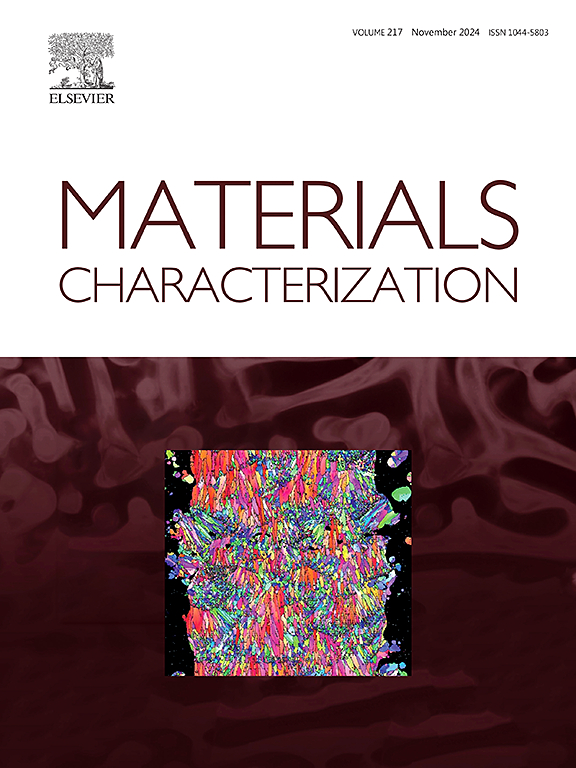Effects of laser power and Y2O3/Ti contents on microstructure and hardness of ODS-CrFeNi medium entropy alloys by additive manufacturing
IF 4.8
2区 材料科学
Q1 MATERIALS SCIENCE, CHARACTERIZATION & TESTING
引用次数: 0
Abstract
Oxide dispersion strengthened (ODS)-CrFeNi medium entropy alloys (MEAs) were prepared by laser engineering near-net forming. The effects of varying laser power (1800 W, 2000 W, 2200 W and 2400 W) and Y2O3/Ti contents (0.5 wt%, 1 wt% and 1.5 wt%) on the microstructure and hardness of the alloys were investigated. The results showed that the ODS-CrFeNi MEA is mainly composed of FCC-structured FeNi-rich matrix, plate-like FeCr-rich σ phase and Cr-rich phase with a BCC structure. The volume fractions of the Cr-rich phase and the σ phase are found to be closely related to the laser power and the oxide content. With the increasing laser power, the volume fraction of the Cr-rich phase decreases while that of the σ phase increases. The addition of Y2O3/Ti effectively refines the solidification microstructure. With the increasing Y2O3/Ti content, the volume fraction of Cr-rich phases increases and the σ phase decreases. The alloy with an optimized laser power of 2000 W and a Y2O3/Ti content of 1 wt% exhibits the lowest porosity, the highest density and hardness. Its hardness reaches 629 HV. The mechanism by which laser powder and Y2O3/Ti additions affect the microstructure and hardness has been elucidated.
求助全文
约1分钟内获得全文
求助全文
来源期刊

Materials Characterization
工程技术-材料科学:表征与测试
CiteScore
7.60
自引率
8.50%
发文量
746
审稿时长
36 days
期刊介绍:
Materials Characterization features original articles and state-of-the-art reviews on theoretical and practical aspects of the structure and behaviour of materials.
The Journal focuses on all characterization techniques, including all forms of microscopy (light, electron, acoustic, etc.,) and analysis (especially microanalysis and surface analytical techniques). Developments in both this wide range of techniques and their application to the quantification of the microstructure of materials are essential facets of the Journal.
The Journal provides the Materials Scientist/Engineer with up-to-date information on many types of materials with an underlying theme of explaining the behavior of materials using novel approaches. Materials covered by the journal include:
Metals & Alloys
Ceramics
Nanomaterials
Biomedical materials
Optical materials
Composites
Natural Materials.
 求助内容:
求助内容: 应助结果提醒方式:
应助结果提醒方式:


